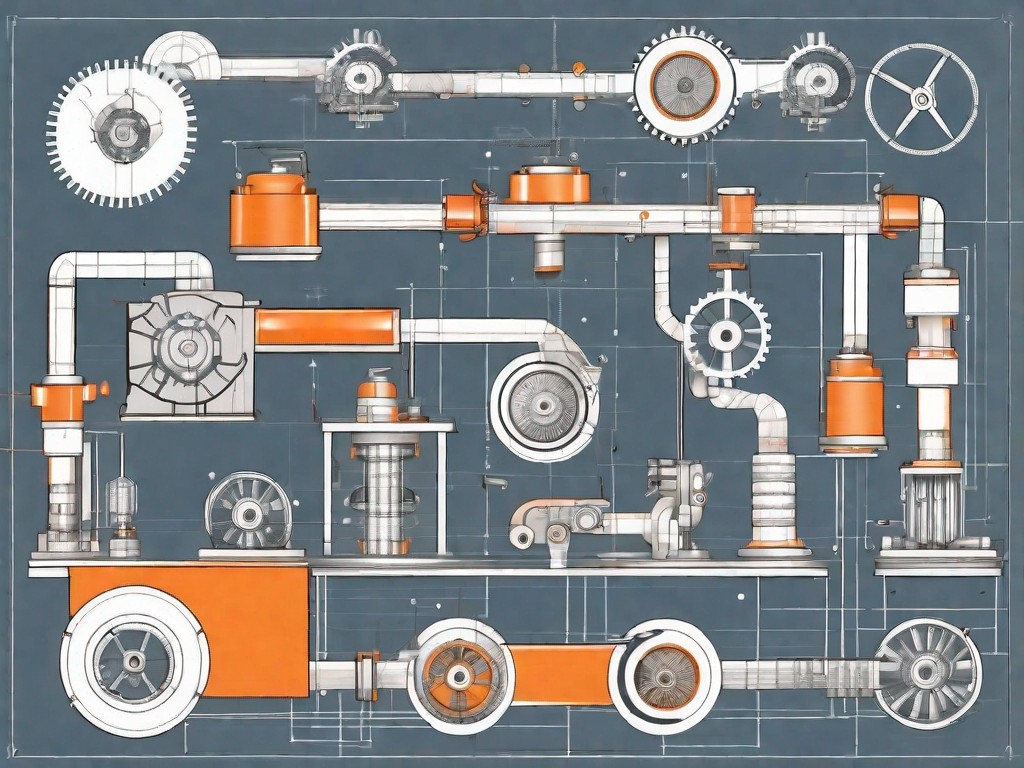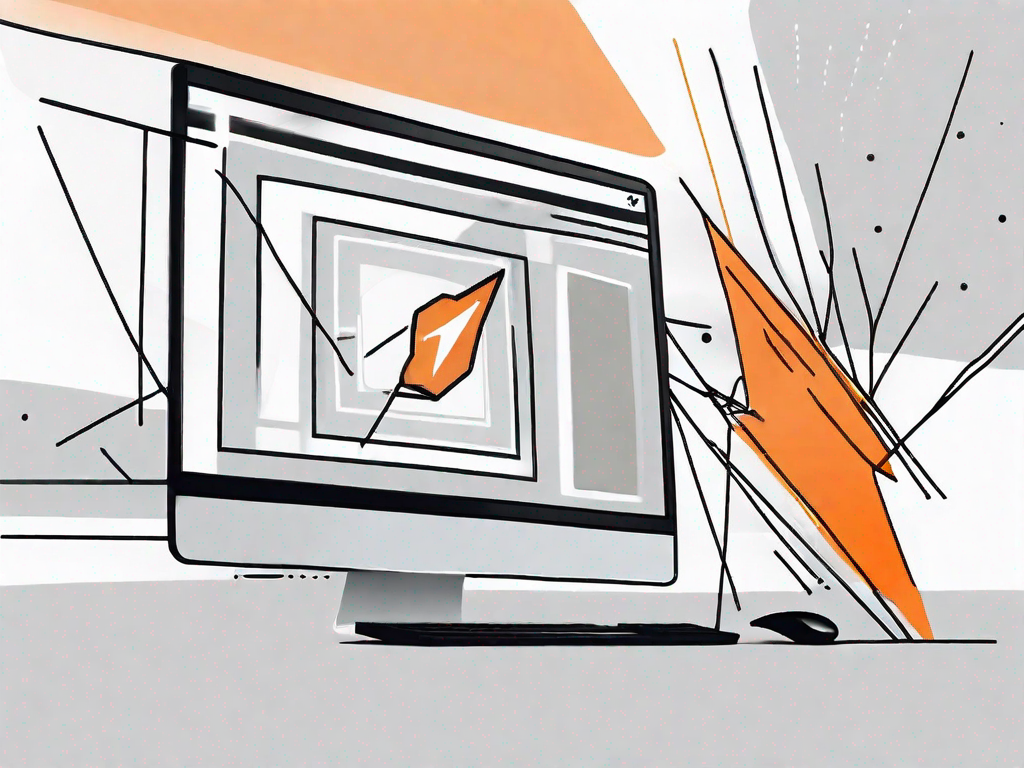.svg)
Design Strategy Template for Machinery and Industrial Equipment
.svg)

In today's fast-paced and competitive business environment, having a well-defined design strategy is crucial for machinery and industrial equipment manufacturers. A design strategy serves as a blueprint for creating innovative and efficient products that cater to the specific needs of the industry. This article aims to explore the importance of a design strategy in this sector, discuss its key benefits, outline the components of a successful design strategy template, provide a step-by-step guide to creating one, and present case studies of effective design strategies in the industry.
Understanding the Importance of a Design Strategy
When it comes to machinery and industrial equipment, the role of design strategy cannot be underestimated. It acts as a guiding principle that helps manufacturers align their design efforts with their overall business objectives. By developing a clear and well-defined design strategy, companies can articulate their brand identity, differentiate themselves in the market, and gain a competitive edge.
The Role of Design Strategy in Machinery and Industrial Equipment
A design strategy sets the direction for product development in the machinery and industrial equipment sector. It enables manufacturers to identify and prioritize market needs, anticipate customer requirements, and design solutions that meet these demands effectively. Moreover, it helps consolidate the efforts of cross-functional teams, ensuring everyone is aligned towards a common goal.
For example, in the automotive industry, design strategy plays a crucial role in shaping the exterior and interior of vehicles. It encompasses factors such as aerodynamics, ergonomics, and aesthetics, all of which contribute to the overall performance and appeal of the vehicle. By having a well-planned design strategy, car manufacturers can create vehicles that not only meet the functional requirements of customers but also delight them with innovative features and stylish designs.
In the field of industrial machinery, design strategy is equally important. Manufacturers need to consider factors such as ease of use, safety, and efficiency when designing equipment for various industries. By incorporating these considerations into their design strategy, they can develop machinery that not only improves productivity but also reduces the risk of accidents and enhances the overall working environment.
Key Benefits of a Well-Planned Design Strategy
The benefits of a well-planned design strategy are manifold. Firstly, it fosters innovation by encouraging designers to think outside the box and come up with breakthrough solutions. By providing designers with a clear direction and purpose, a design strategy empowers them to push the boundaries of what is possible and create products that are truly innovative.
Take, for instance, the case of Apple Inc. The company's design strategy, characterized by simplicity, elegance, and user-friendliness, has been instrumental in the success of its products. By focusing on the user experience and incorporating intuitive design elements, Apple has been able to revolutionize industries such as smartphones, tablets, and personal computers.
Secondly, a well-planned design strategy enhances product quality and functionality, leading to increased customer satisfaction. By conducting thorough research and understanding customer needs, manufacturers can design products that not only meet basic requirements but also exceed expectations. This attention to detail and focus on delivering value to customers can result in higher levels of customer satisfaction and loyalty.
Furthermore, a design strategy optimizes resources and reduces time-to-market by streamlining the product development process. By having a clear roadmap and defined goals, manufacturers can minimize wasted efforts and ensure that resources are allocated efficiently. This not only saves time and money but also enables companies to bring products to market faster, gaining a competitive advantage in the process.
Lastly, a design strategy helps manufacturers establish a strong brand presence and build customer loyalty. By consistently delivering products that are aligned with the brand's values and identity, companies can create a positive perception in the minds of consumers. This brand consistency and the association of quality with the brand can lead to customer loyalty, repeat purchases, and positive word-of-mouth recommendations.
In conclusion, a well-planned design strategy is essential for manufacturers in the machinery and industrial equipment sector. It provides a clear direction for product development, fosters innovation, enhances product quality, optimizes resources, and helps build a strong brand presence. By investing in a robust design strategy, companies can position themselves as leaders in their respective industries and drive long-term success.
Components of a Successful Design Strategy Template
A successful design strategy template consists of several essential components that collectively contribute to its effectiveness and relevance. These components include:
Identifying the Core Objectives
It is important to clearly define the core objectives of the design strategy. This involves understanding the target market, deciphering customer needs, and identifying the unique selling points of the machinery or industrial equipment.
In order to identify the core objectives, extensive market research is conducted to gain a deep understanding of the target audience. This research involves analyzing market trends, studying consumer behavior, and conducting surveys and interviews with potential customers. By thoroughly examining the market landscape, manufacturers can gain valuable insights that inform the design strategy.
Furthermore, deciphering customer needs is a crucial step in developing a successful design strategy. This involves understanding the pain points and challenges faced by customers in relation to the machinery or industrial equipment. By empathizing with the end-users, manufacturers can create designs that address their specific needs and provide innovative solutions.
Identifying the unique selling points of the machinery or industrial equipment is another important aspect of the design strategy template. This involves determining the key features and advantages that set the product apart from competitors. By highlighting these unique selling points, manufacturers can effectively market their products and attract potential customers.
Assessing the Current Machinery Design
A thorough evaluation of the existing machinery design is crucial to identify areas for improvement. This assessment can involve analyzing performance metrics, conducting user testing, and seeking feedback from stakeholders.
Performance metrics provide valuable insights into the effectiveness and efficiency of the current machinery design. By analyzing factors such as productivity, reliability, and maintenance costs, manufacturers can identify areas that require improvement. This data-driven approach ensures that the design strategy is grounded in objective measurements and aims to enhance overall performance.
In addition to performance metrics, conducting user testing is an essential step in assessing the current machinery design. By observing how users interact with the equipment, manufacturers can gain valuable insights into usability issues, ergonomic considerations, and overall user experience. This firsthand feedback allows for iterative design improvements that prioritize user satisfaction.
Seeking feedback from stakeholders, such as engineers, technicians, and operators, is another important aspect of assessing the current machinery design. These individuals possess valuable expertise and insights that can contribute to the design strategy. By incorporating their feedback, manufacturers can ensure that the design strategy aligns with the practical requirements and expectations of those who work with the machinery on a daily basis.
Incorporating User Feedback and Requirements
User feedback plays a vital role in shaping the design strategy. By actively involving users in the design process, manufacturers gain insights into their preferences, pain points, and expectations. This information is then used to refine the design strategy and create user-centric products.
One way to incorporate user feedback is through usability testing, where users are given the opportunity to interact with prototypes or early-stage designs. By observing their behavior and collecting feedback, manufacturers can identify areas that need improvement and make necessary adjustments. This iterative approach ensures that the final design meets the needs and expectations of the end-users.
Furthermore, involving users in the design process through surveys and interviews allows manufacturers to gather qualitative insights. By understanding the preferences and expectations of the target audience, manufacturers can tailor the design strategy to create products that resonate with customers on a deeper level. This user-centric approach enhances customer satisfaction and increases the likelihood of product success in the market.
In conclusion, a successful design strategy template consists of various components that work together to create a comprehensive and effective approach. By identifying core objectives, assessing the current machinery design, and incorporating user feedback and requirements, manufacturers can develop design strategies that result in innovative, user-centric products.
Step-by-Step Guide to Creating a Design Strategy Template
Creating a design strategy template requires a systematic approach. The following step-by-step guide can help manufacturers develop an effective design strategy:
Defining the Scope of the Project
The first step is to define the scope of the project. This involves identifying the target market, specifying the product requirements, and determining the project timeline.
Conducting a SWOT Analysis
A SWOT analysis helps identify the internal strengths and weaknesses of the organization, as well as the external opportunities and threats in the market. This analysis provides valuable insights for creating a design strategy that aligns with the company's capabilities and market conditions.
Developing a Design Concept
Based on the SWOT analysis, manufacturers can develop a design concept that addresses the identified needs and leverages the company's strengths. This concept serves as the foundation for the design strategy.
Implementing the Design Strategy
Once the design concept is finalized, it is time to implement the design strategy. This involves allocating resources, setting milestones, and monitoring progress to ensure the design strategy is effectively executed.
Case Studies of Effective Design Strategies in the Industry
Real-world case studies provide valuable insights into how design strategies have been successfully implemented in the machinery and industrial equipment industry. The following are two examples that highlight innovative and efficient design strategies:
Case Study 1: Innovative Design Strategy in Automotive Industry
In a rapidly evolving automotive industry, a leading machinery manufacturer implemented an innovative design strategy that focused on creating sustainable and energy-efficient components. By harnessing advanced materials and adopting smart manufacturing techniques, the company was able to design products that met stringent environmental regulations while delivering superior performance.
Case Study 2: Efficient Design Strategy in Manufacturing Industry
Another successful design strategy example comes from a manufacturing equipment supplier that aimed to enhance productivity and reduce downtime for its customers. By leveraging data analytics and incorporating user feedback, the company redesigned its machinery to optimize efficiency and minimize maintenance requirements. This design strategy resulted in significant cost savings for manufacturing companies and improved overall equipment effectiveness.
In conclusion, a well-defined design strategy is integral to achieving success in the machinery and industrial equipment industry. It serves as a roadmap for innovation, quality improvement, and market differentiation. By understanding the importance of a design strategy, identifying its key components, and following a systematic approach to creating one, manufacturers can position themselves as industry leaders and deliver products that not only meet but exceed customer expectations.
Let's
Let’s discuss how we can bring reinvigorated value and purpose to your brand.







.svg)